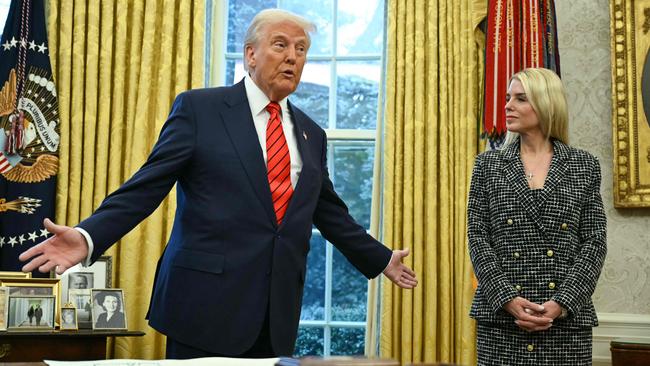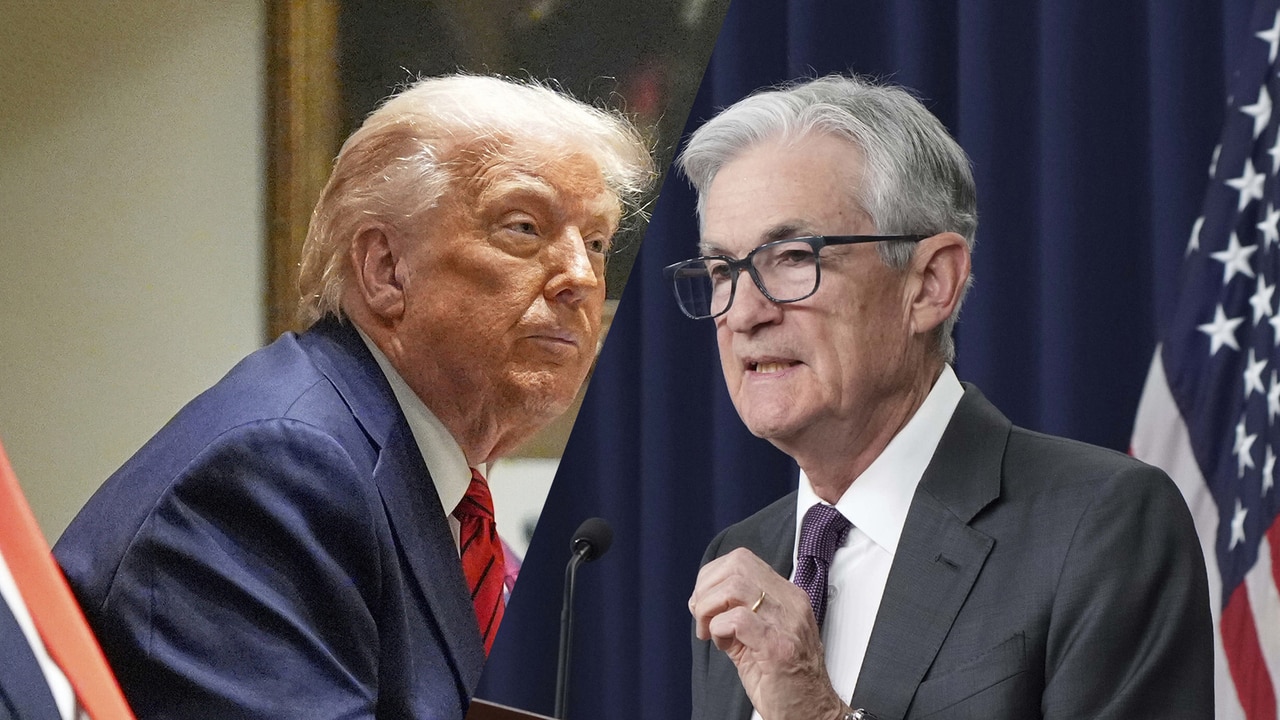Trump losing tariff war with China as markets and MAGA fans watch
Early signs suggest Donald Trump is losing the game of brinkmanship to China, which Americans are realising. Either way there will be some big decisions for Australia after the election.

Business
Don't miss out on the headlines from Business. Followed categories will be added to My News.
American markets are beginning to realise that US President Donald Trump is losing the battle to “Make America Great Again” and contain China.
China has been preparing for this battle for decades. The US was not adequately prepared for battle and so far has been disorganised.
Australian and global share markets follow Wall Street, so America’s pain is being shared, but the consequent fall in the US dollar and rise in the Australian currency will help Australia reduce interest rates.
At this stage, while China is winning, it has not won. Either way, there will be some serious decisions to be made in Australia after the election.
China is boasting that as the safety and credibility of US assets are being questioned more, enterprises are using the Yuan in international settlements rather than the US dollar.
Whereas in previous global crises, money flowed into the US as a safe haven, it is now flowing out.
China has helped that process by selling portions of its US bond and treasury stock, causing US bond prices to fall and skyrocketing the interest rate on US 10-year bonds – the base component of American housing loans and consumer confidence.
That’s an early win for China, but it will be a deadly blow if the US loses its dominant global currency status.
The battle between President Trump and Federal Reserve chair Jerome Powell over whether tariffs should stop interest rate reductions has been anticipated since the day President Trump took office.
President Trump can argue that the tariffs are like a GST and will be matched with tax reductions. If everything else was going well then the fallout from this battle would be contained.
But it is not being contained.
On the money side, we see the rise in US bond rates and the rise of the Yuan as a potential rival international currency. Then on the trade side over the Easter weekend, the Chinese Ministry of Commerce declared that it will retaliate against countries that co-operate with the US in ways that compromise Beijing’s interests.

This is a thinly veiled attack on the US Silicon Valley-based tech sector, which has been at the core of the rise in the US share market and is now at the forefront of the market fall.
And China has delivered a severe blow to US technology and defence by starving the US of heavy rare earths like terbium. Conversely, if China is effectively blocked from the US market there will be severe consequences for China plus the countries that it trades with, including Australia.
Clearly China believes it will win and at this stage looks to be prepared to wear the pain.
President Trump announced big rises in tariffs on a series of countries where their trade with China was much greater than their trade with the US. Those tariffs were suspended to allow negotiations and to allow greater access for US goods and services into those countries, also requiring them to embrace US telecommunications and computer technology rather than Chinese systems.
In President Trump’s first administration such tactics might have worked, but now that China has emerged as the leading trading country for most countries, and it has a technology sector that matches US innovation, and in some areas surpasses Silicon Valley.
US companies’ innovation pace has become hampered by the need to generate enormous profits to justify share prices.
In addition, China has a defence force that rivals and in some areas surpasses the US.
The Wall Street Journal reports that President Trump has signalled he is willing to withdraw security guarantees for countries depending on American support unless they make economic concessions. The Chinese ministry describes the US actions as “abusing tariffs” and “unilateral bullying”.
Both powers are seeking to recruit allies in their battle. The Trump administration is currently seeking to cut deals with dozens of countries to co-operate in isolating China.
Meanwhile, Chinese President Xi Jinping and his senior lieutenants have fanned out in recent days, trying to pull trading partners away from the US.
In technology, including AI, chips, robotics, quantum and biotechnologies China is either catching up to the US or matching it.
The emergence of AI chatbot app DeepSeek enhanced China’s national confidence that it can win in technology, given DeepSeek’s ability to quickly create an open-source AI model with less investment than the US.
But as I pointed out earlier this month, China is opening a second front via an attack on silicon based technology – the base of the US technology leaders.
China quietly reclassified photonic and neuromorphic chips as national strategic assets. Photonic chips, which use photons instead of electrons, transmit data at light speed with virtually no heat loss – a leap that could reduce current artificial intelligence electricity usage substantially.
These events transform the role of China’s so-called “Belt and Road” initiative. China has poured more than $US1.1 trillion into infrastructure projects across 148 countries. But what looks set to bind that network isn’t just railways or ports but rather currency settlement control, where digital Yuan is fast becoming the preferred currency, and the Chinese-based technology systems being embraced.
More Coverage
Originally published as Trump losing tariff war with China as markets and MAGA fans watch





